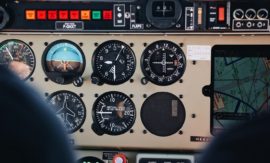Intended learning outcomes: Present a conceptual framework to handle the diverse functions and requirements of packaging.
Packaging is the enclosure of goods for protection or other functions.
The packaged good is the packaged product or product to be packaged.
The packing unit is the quantity of packaged items per package, with reference to the item unit (for example, a case of 12 bottles).
The packaging function is the reason for packaging.
Packaging plays a crucial role in logistics, as it is often only packaging that makes the goods produced distributable. Packaging has no function on its own; it is the goods packaged that determine the function. As soon as the product arrives at the place of consumption, packaging has fulfilled its purpose and becomes waste or material for re-use and recycle. The many possible functions of packaging can be grouped into five areas (see Figure 15.4.2.1).
Fig. 15.4.2.1 Conceptual framework to handle the diverse functions and requirements of packaging. (Following [JuSc00]).
- The protective function is the classical function of packaging. Active protective functions ensure that the product reaches the end user undamaged. Packaging must protect packaged goods from inner and outer stresses: mechanical, chemical, physical, and biological. In addition, packaging can reduce pilfering. Passive protective functions protect the people, facilities, and other goods that are involved in distribution of the products.
- The distribution function of packaging supports storage, transport, and transshipment/reloading. The type of packaging has a significant effect on handling in the warehouse and utilization of storage and transport space. Well-thought-out packaging decisions can improve stackability, optimize space utilization, and simplify the implementation of technical devices. Reduction of the weight of packaging can reduce freight costs. The right packing — for example, the use of standardized load carriers like pallets and containers — can considerably improve cargo transshipment from one means of transportation to another at loading stations. For the most efficient packing, the dimensions of packaging will conform to standardized load carriers (for example, the 800 times 1200-mm European pool pallet).[note 1515]
- Labeling and stamping produce the information and sales promotion functions of packaging. Legally required declarations of contents for foodstuffs or hazardous materials belong here, as do also printed instructions for transport, handling, or storage. Moreover, packaging can serve marketing purposes. This promotion function gains in significance the closer a product comes to being a consumer good. Self-service sales, for example, where there is no contact at all between producer and customer, rely on modern packaging, and it is the most significant component of the company’s product-market positioning policy. Packaging attracts the attention of the customer and creates an association to the product. More and more, manufacturers mark products with EAN codes or UCC/UPC codes / identification numbers[note 1516] or suggest retail prices for easier handling on the part of retailers and customers.
- The use function refers to two things: the customer’s handling of the packaging and the reusability and recyclability of packaging. Environmentally friendly packaging is becoming ever more important. Multiway, or return, packaging is gaining customer acceptance.
- The sales function overlaps with all the other functions listed above but adds the demand for economical design of packaging for cost-reduction purposes. There is increasing cooperation between industry and commercial enterprises in the area of sales and retail packaging. This is particularly important for self-service sales, because unpacking shipping cartons, stocking the shelves of the store, and labeling products and display shelves are extremely labor intensive. For this reason, packaging is becoming much more store-friendly (store-ready shipments for better flowthrough) and is even being designed to fit the dimensions of store shelving units (shelf-ready for better presentation).
The packaging system comprises the packaged good, the packaging or packaging materials, and the packaging process.
The three elements of the packaging system are closely intertwined. The choice of packaging is determined by the characteristics of the packaged goods and the functions that packaging must fulfill. The packaging materials in turn determine the packaging process. For example, they determine the type of machine required for forming, filling, and sealing. Conversely, to allow automated processing at all, packaging machines place much higher demands on the packaging materials than manual packing does.
Packaging is produced from packaging materials.
Various materials are used for packaging: paper, cardboard, corrugated board, plastics, metal (steel), aluminum, glass, wood, rubber, textiles, and multilayer materials (composites). Each packaging material has its own unique properties that can be utilized to fulfill the packaging function. The choice of packaging materials is also determined by recycling and return packaging considerations. Return and recycling can engender additional costs that may be prohibitive.
Packing and marking is made up of all necessary activities to package the good.
These activities include supplying empty packaging and the goods to the packing facilities, setting up and filling the packaging, marking and labeling, and preparation of the packaged units for transport. Support through packaging machines is common. Some examples are bagging machines, filling machines, form-fill-seal machines, can-filling machines, flat-bag packaging machines, palletizing machines, and overwrapping machines.
Continuation in next subsection (15.4.2b).
Course section 15.4: Subsections and their intended learning outcomes

15.4 Distribution Control
Intended learning outcomes: Explain order picking, packaging, load building, and transportation to receiver.

15.4.1 Order Picking
Intended learning outcomes: Explain discrete order picking and batch picking. Describe sequential picking and zone picking. Differentiate between decentralized goods preparation and centralized goods preparation.

15.4.2 Packaging
Intended learning outcomes: Present a conceptual framework to handle the diverse functions and requirements of packaging.

15.4.2b Load Building
Intended learning outcomes: Explain load building. Identify the levels of aggregation in load building.

15.4.3 Transportation to Receiver
Intended learning outcomes: Describe the selection of the mode of transport. Explain the transport chain from supplier to receiver and various kinds of organizing transshipment points.

15.4.3b Transport Routing and Scheduling
Intended learning outcomes: Present routing and scheduling and the optimization of loading space.
